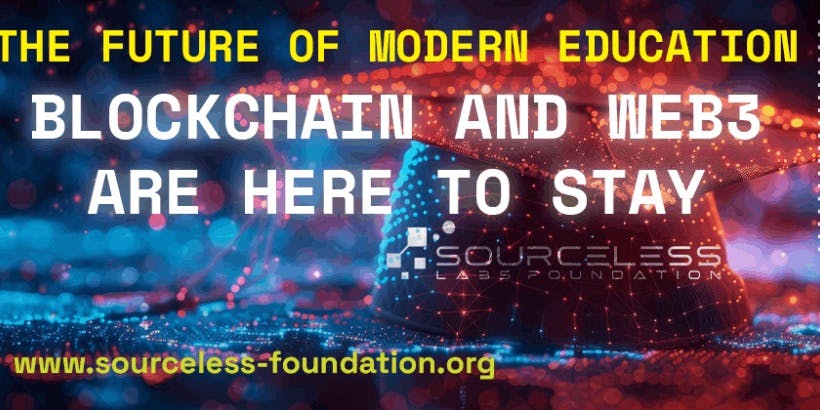
The Future of Modern Education: Blockchain and Web3 Are Here to Stay

The Web3 sphere, known for its decentralized internet run by its users and creators through tokens, is making a huge impact in so many fields and education is no exception. Despite the loud support in this direction, higher education’s response has been mixed. While blockchain jobs have skyrocketed by nearly 400% in 2021, the uptake of Web3 curriculum in universities remains sparse. Most institutions seem hesitant to fully dive into teaching decentralized finance (DeFi) and Web3 technologies, potentially leaving students yearning for for subjects that are relevant to our times.
Why the Hesitation?
Many universities appear cautious, pondering the longevity and stability of Web3 technologies amid a rapidly changing regulatory environment and concerns over security.
This conservatism may also stem from a preference for traditional subjects believed to offer clearer returns on investment. Yet, as the pace of technological advancement quickens, the educational content on offer often lags behind, leaving students with outdated knowledge that may not fully prepare them for today’s digital-driven job market.
The Imperative for Web3 Education
The argument for integrating Web3 education into university curricula is strong. Just as early discussions around the disruptive potential of social media proved pivotal, understanding and leveraging Web3 technologies could provide students with a competitive edge in the new digital economy. The demand for blockchain expertise is evident in the job market’s growth, yet a stark contrast lies in the limited number of universities offering relevant courses.
The Benefits of Web3: Alternatives and Opportunities
Introducing Web3 and blockchain courses could significantly enhance job placement rates, aligning educational offerings with market demands. Moreover, focusing on Web3 could offer students unique advantages in the job market, particularly in startups where equity and the potential for future gains might be more lucrative than in established Web2 companies.
Beyond immediate job placements, this could also lead to higher alumni donation rates in the long run, reflecting a more satisfied and financially capable graduate cohort.
While developing formal coursework on Web3 might take time, universities can explore other learning avenues, such as mentorship programs, industry conferences, or partnerships with innovation hubs. These alternatives can provide immediate, relevant exposure to Web3, offering students and educators practical insights and networking opportunities in this burgeoning field.
The momentum behind Web3’s integration into the educational landscape is undeniable. As industries across the board begin to acknowledge and integrate these technologies, the onus is on educational institutions to adapt, ensuring they adequately prepare students for the future. Embracing Web3 education not only aligns with current technological trends but also sets the stage for nurturing a generation that is well-equipped to navigate and shape the digital future.
Blockchain in 2024: Statistics and Predictions
Blockchain technology is revolutionizing the educational sector, extending far beyond its initial cryptocurrency applications. It offers novel solutions to longstanding challenges, ensuring a more transparent, secure, and efficient educational system.
Key statistics underline blockchain’s growing influence in education:
A staggering 91.3% of educational startups using blockchain are in higher education, signaling significant technological adoption at universities and colleges.
By 2028, blockchain investment in education is expected to surge to nearly $883.31 million, indicating strong belief in its capacity to transform the sector.
The market for blockchain in education, which was valued at $34.8 million in 2017, projected to reach $411 million in 2023, showcasing rapid growth and confidence in blockchain’s potential.
According to PwC, 24% of executives are investing in blockchain to improve the education system, reflecting its importance at the intersection of technology and education.
Europe holds a 27.3% market share in blockchain in education as of 2020, with the Asia Pacific region predicted to see the highest growth rate due to increased adoption in the coming years.
Blockchain adoption could reduce educational sector operational costs by more than 5%, highlighting its efficiency and cost-saving potential.
Yet, a Gartner survey found only 1% of Chief Information Officers (CIOs) in education have adopted blockchain, pointing to a gap between potential and actual use.
At SourceLess Labs Foundation we have full confidence that blockchain will continue to shape the educational and collaborative landscape. That’s why we are dedicated to leveraging this technology to support and provide innovative, ethical, and decentralized educational solutions. We aim to unlock new possibilities for learning and thrive in this new digital age that break any barriers of location, politics and economics.
Learn more about our initiatives and join us in transforming education through blockchain at SourceLess Labs Foundation.
References:
https://blockworks.co/
https://www.www.marketsandmarkets.com
https://www.www.marketwatch.com
https://www.www.pwc.com
https://www.ec.europa.eu
https://www.www.gartner.com


